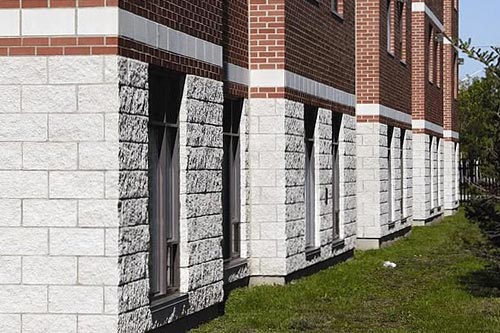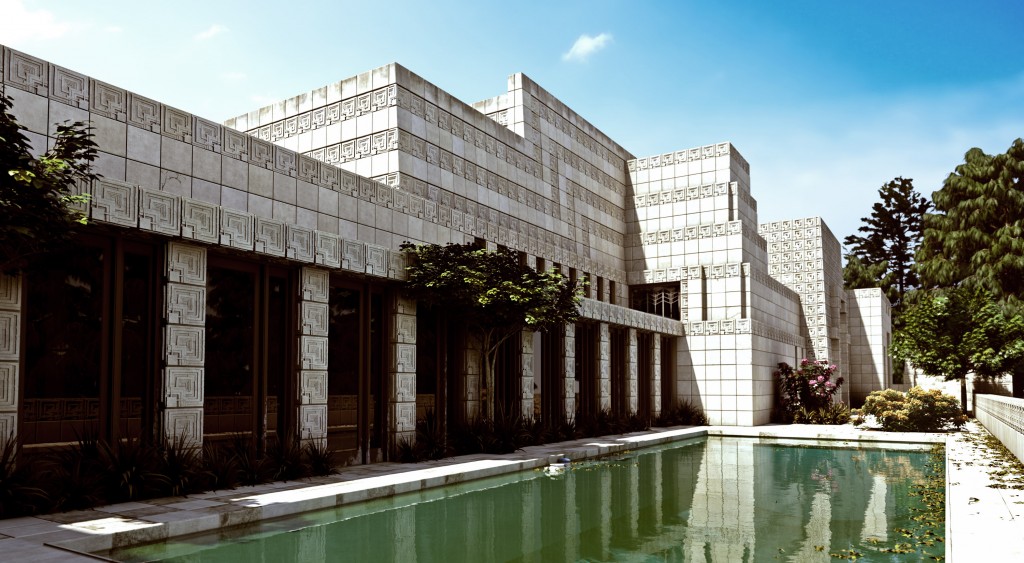A normal block or concrete masonry unit (CMU) is made from Portland cement and sand or fine gravel. Lightweight blocks are produced by using aerated concrete or lighter weight aggregates. The very firm concrete is pressed into moulds under intense pressure and then the formed block is cured in an autoclave or humidity controlled environment.
Blocks are usually produced with hollow centres to reduce weight and improve insulation. These voids also allow rebar and concrete to run vertically through the block to create stronger, load-bearing walls (reinforced concrete).
Block is available in many sizes but the standard size is 20cm x 20cm x 40cm (8in. x 8in. x 16in.); the actual size is usually about 1cm smaller to allow for mortar joints.

